Tom's Hardware Verdict
The EVGA SuperNOVA 850 G6 is a good PSU, but it has some strong competition.
Pros
- +
Full power at 47 degrees Celsius
- +
Good build quality
- +
Tight enough load regulation at 12V
- +
Efficient at super-light loads
- +
Long hold-up time
- +
Low inrush current with 115V
- +
Not noisy at normal operating conditions
- +
Fully modular
- +
Loads of connectors
- +
Compatible with the alternative sleep mode
- +
Compact dimensions
- +
10-year warranty
Cons
- -
Fan speed profile could be smoother
- -
Efficiency at normal and light loads could be higher
- -
High inrush current with 230V
- -
Not so efficient 5VSB rail
- -
Small distance between connectors
Why you can trust Tom's Hardware
With super-compact dimensions for an 850W unit and high build quality, the EVGA SuperNOVA 850 G6 definitely looks like an upgraded version of the corresponding FSP-made G5 model. It also achieves high enough overall performance to back up those first impressions, which puts it close to the competition from Corsair (RM850x), XPG (Core Reactor 850), Cooler Master (V850 Gold V2), and Seasonic (GX-850). Nonetheless, the older 850 G3 unit achieves notably higher performance, taking the lead from all aforementioned products. It is a shame that that EVGA stopped its cooperation with Super Flower.
The new EVGA G6 line consists of Seasonic-made models with capacities ranging from 750W to 1000W. We have already evaluated the flagship G6 unit, and its performance was amazing. We are eager to see if the middle member of the line, with 850W max power, will achieve the same high-performance levels and earn a place in our best PSUs article.
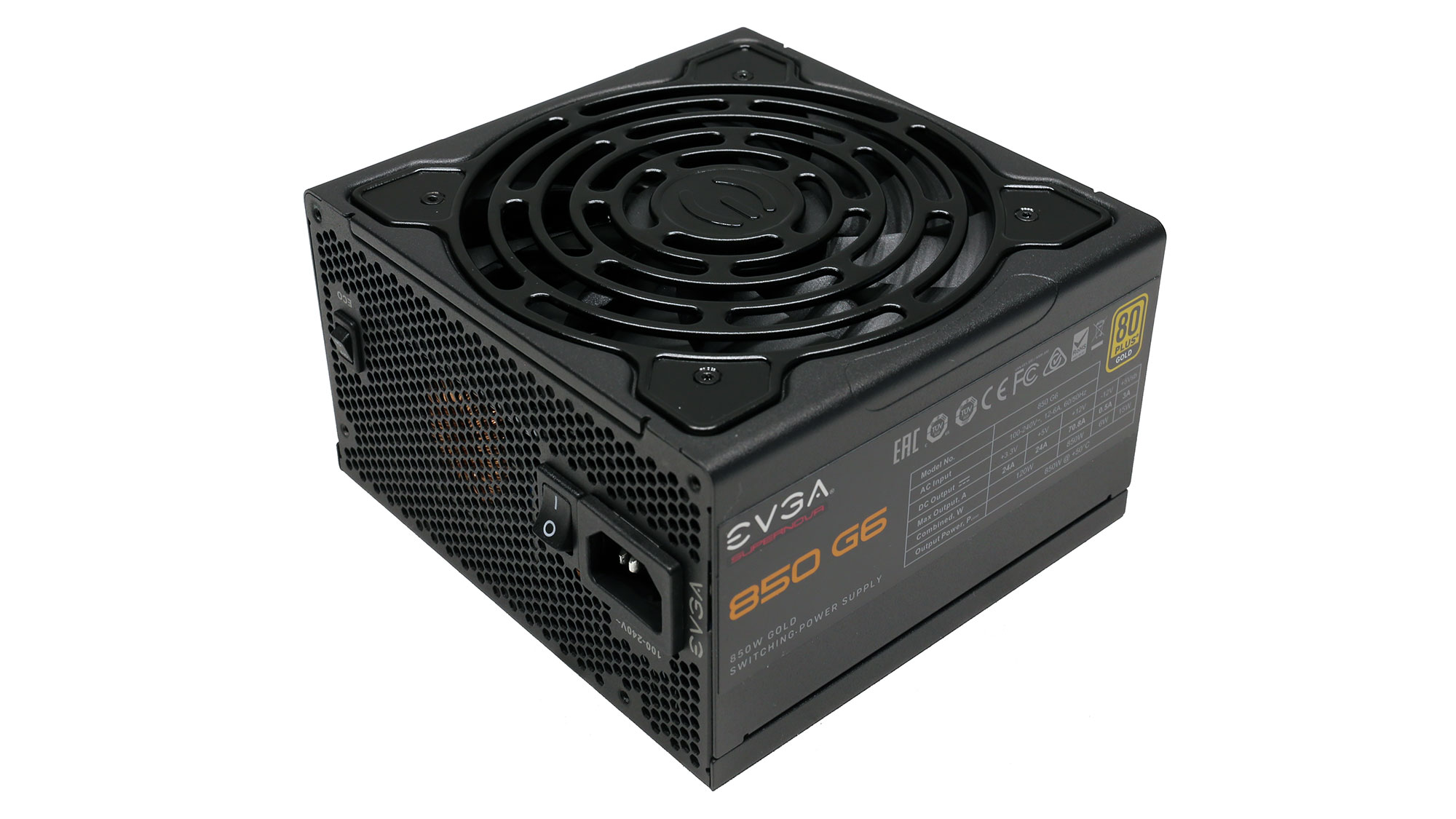
Product Photos

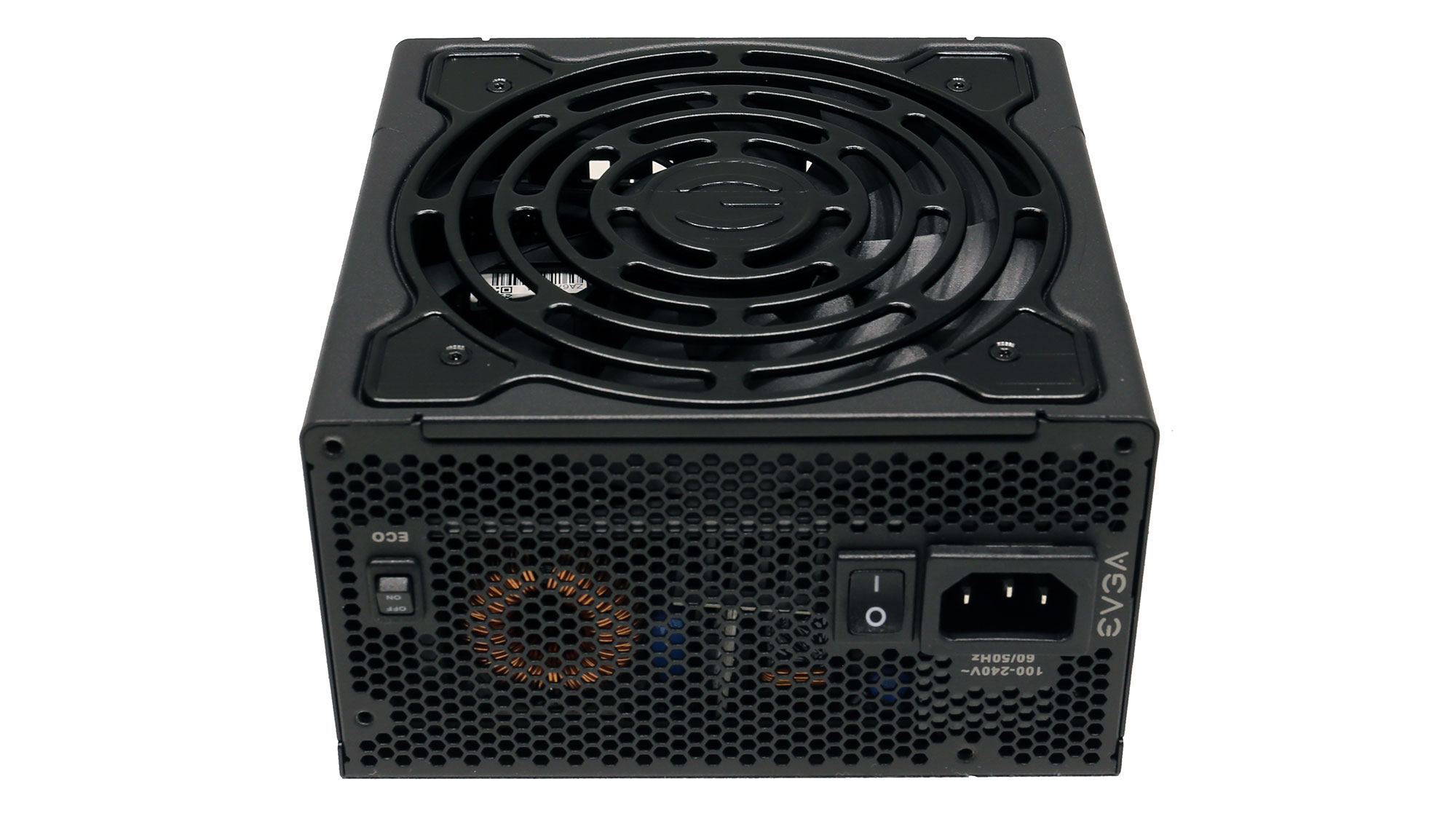










Like its big brother, the 850 G6 also features hybrid (Hardware & Firmware) over power protection (OPP). An analog IC handles hardware OPP, and an MCU is responsible for the firmware OPP. According to EVGA, the first is designed to trip when power output exceeds 135% for a few nanoseconds. The latter trips once power exceeds 125% for longer periods, in the millisecond range. During the 1000 G6 evaluation, we didn't notice any difference between that unit and PSUs featuring "normal" OPP circuits.

Product Photos







Specifications
|
Manufacturer (OEM) |
Seasonic |
|
Max. DC Output |
850W |
|
Efficiency | 80 PLUS Gold, Cybenetics Gold (87-89%) |
|
Noise | Cybenetics A- (25-30 dB[A]) |
|
Modular |
✓ (fully) |
|
Intel C6/C7 Power State Support |
✓ |
|
Operating Temperature (Continuous Full Load) |
0 - 50°C |
|
Over Voltage Protection |
✓ |
|
Under Voltage Protection |
✓ |
|
Over Power Protection |
✓ |
|
Over Current (+12V) Protection |
✓ |
|
Over Temperature Protection |
✓ |
|
Short Circuit Protection |
✓ |
|
Surge Protection |
✓ |
|
Inrush Current Protection |
✓ |
|
Fan Failure Protection |
✗ |
|
No Load Operation |
✓ |
|
Cooling |
135mm Fluid Dynamic Bearing Fan (HA13525M12F-Z) |
|
Semi-Passive Operation |
✓ (selectable) |
|
Dimensions (W x H x D) |
150 x 85 x 140mm |
|
Weight |
1.7 kg (3.75 lb) |
|
Form Factor |
ATX12V v2.53, EPS 2.92 |
|
Warranty |
10 Years |
Power Specifications
| Rail | 3.3V | 5V | 12V | 5VSB | -12V | |
|---|---|---|---|---|---|---|
| Max. Power | Amps | 24 | 24 | 70.8 | 3 | 0.5 |
| Watts | 120 | 850 | 15 | 6 | ||
| Total Max. Power (W) | 850 |
Cables & Connectors
| Description | Cable Count | Connector Count (Total) | Gauge | In Cable Capacitors |
|---|---|---|---|---|
| ATX connector 20+4 pin (610mm) | 1 | 1 | 18-22AWG | No |
| 4+4 pin EPS12V (700mm) | 2 | 2 | 18AWG | No |
| 6+2 pin PCIe (700mm+125mm) | 2 | 4 | 16-18AWG | No |
| 6+2 pin PCIe (700mm) | 2 | 2 | 18AWG | No |
| SATA (560mm+110mm+110mm) | 3 | 9 | 18AWG | No |
| 4-pin Molex (560mm+100mm+100mm+100mm) | 1 | 4 | 18AWG | No |
| FDD Adapter (105mm) | 1 | 1 | 22AWG | No |
| AC Power Cord (1400mm) - C13 coupler | 1 | 1 | 16AWG | - |
The provided modular cables are long, but the distance between peripheral connectors is low. This is typical for Seasonic-made units, unfortunately. Usually, parts requiring 4-pin Molex connectors are far from each other, so only 100mm distance between their respective connectors is insufficient. In several cases, the same goes for SATA-powered devices.
There are no in-cable caps, which is good, and it is nice to see two PCIe cables with single connectors. There are two more, with a pair of corresponding connectors installed, if you want to power several graphics cards.

Cable Photos






Component Analysis
If this is your first time reading one of our PSU reviews, we strongly encourage you to look through our PSUs 101 article. This provides valuable information about PSUs and their operation, allowing you to better understand the components we're about to discuss.
| General Data | - |
| Manufacturer (OEM) | Seasonic |
| PCB Type | Double Sided |
| Primary Side | - |
| Transient Filter | 4x Y caps, 2x X caps, 2x CM chokes, 1x MOV, 1x Discharge IC |
| Inrush Protection | NTC Thermistor MF72-5D20L (5 Ohm) & Relay |
| Bridge Rectifier(s) | 2x GBU1508 (800V, 15A @ 100°C) |
| APFC MOSFETs | 2x Infineon IPA60R125P6 (600V, 19A @ 100°C, Rds(on): 0.125Ohm) |
| APFC Boost Diode | 1x STMicroelectronics STTH8S06 (600V, 8A) |
| Bulk Cap(s) | 2x Nippon Chemi-Con (420V, 390uF each or 780uF combined, 2,000h @ 105°C, KMR) |
| Main Switchers | 4x Infineon IPA60R190P6 (600V, 12.7A @ 100°C, Rds(on): 0.19Ohm) |
| APFC Controller | Champion CM6500UN |
| Resonant Controller | Champion CU6901V |
| Topology |
Primary side: APFC, Full-Bridge & LLC converter Secondary side: Synchronous Rectification & DC-DC converters |
| Secondary Side | - |
| +12V MOSFETs | 4x Nexperia PSMN1R4-40YLD (40V, 220A @ 100°C, Rds(on): 1.4mOhm) |
| 5V & 3.3V | DC-DC Converters: 6x Nexperia PSMN4R0-30YLD (30V, 67A @ 100°C, Rds(on): 4mOhm) PWM Controller(s): ANPEC APW7159C |
| Filtering Capacitors |
Electrolytic: 6x Nippon Chemi-Con (2-5,000h @ 105°C, KZE), 2x Nippon Chemi-Con (4-10,000h @ 105°C, KY), 1x Nippon Chemi-Con (2,000h @ 105°C, KZH), 3x Rubycon (3-6,000h @ 105°C, YXG) |
| Supervisor IC | Weltrend WT7527RA (OCP, OVP, UVP, SCP, PG) & Weltrend WT51F104 (Firmware OPP) |
| Fan Controller | Weltrend WT51F104 |
| Fan Model | Hong Hua HA13525M12F-Z (135mm, 12V, 0.36A, Fuid DynamicBearing Fan) |
| 5VSB Circuit | - |
| Rectifier | 1x M.C.C. MBR1045ULPS SBR (45V, 10A) |
| Standby PWM Controller | Excelliance MOS EM8569C |



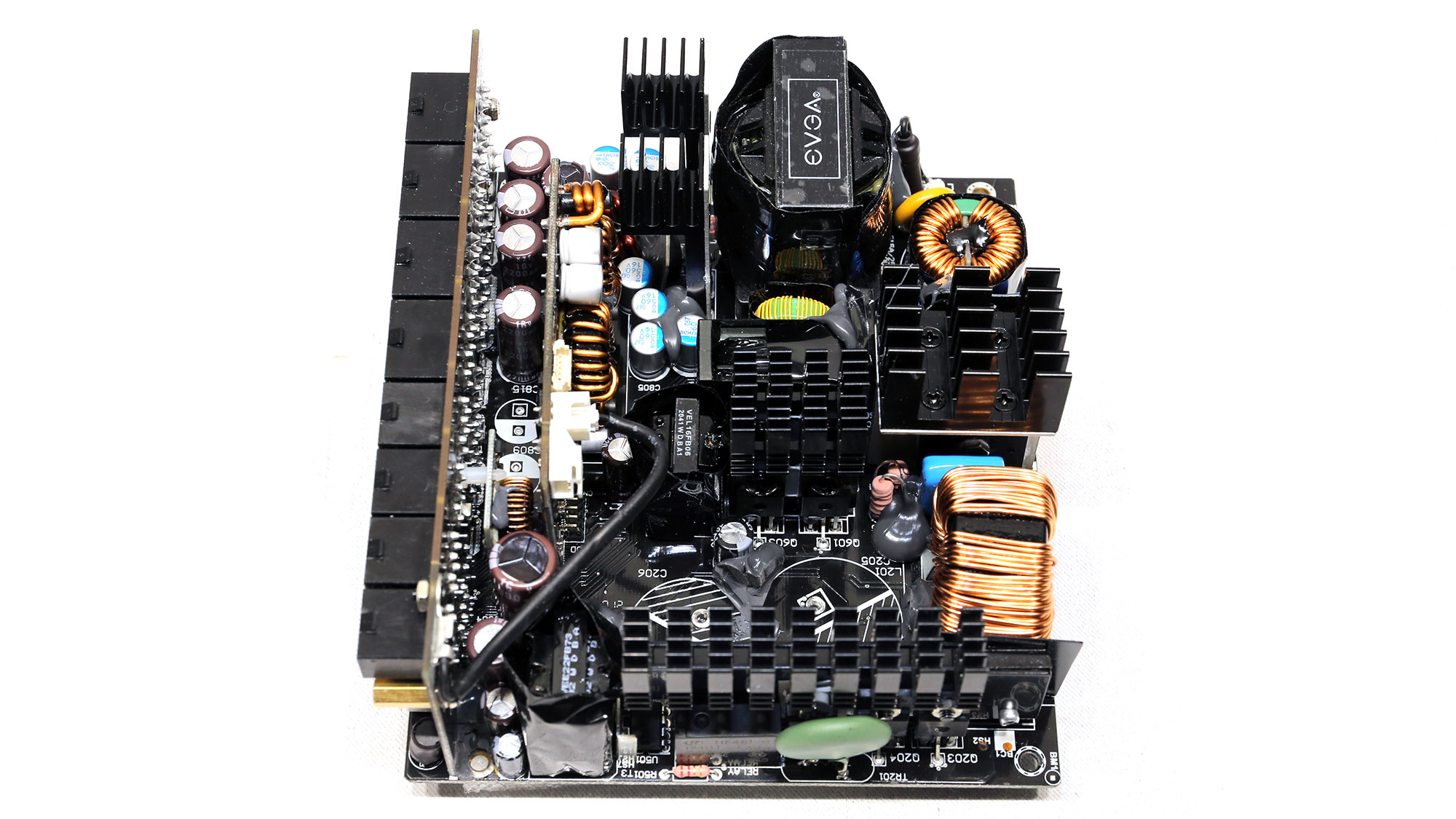
The G6 line is based on Seasonic's Focus platform but with some upgrades. These include an MCU which, besides the firmware OPP, also handles over-temperature protection and the fan speed profile. The PCB is tiny, and another detail that immediately caught our attention is the leaning heat sink that hosts the unit's bridge rectifiers. Seasonic probably did this on purpose to allow for more airflow to the PFC input capacitor. Compared to the original Focus design, this platform's major updates are to the larger PCB hosting the DC-DC converters and the MCU, plus to the cable from the aforementioned PCB to an NTC thermistor installed on the modular board.
Get Tom's Hardware's best news and in-depth reviews, straight to your inbox.

Transient filter





The transient/EMI filter has all the required components to block most incoming and outgoing EMI emissions. Moreover, the same filter includes an MOV for dealing with voltage surges. Finally, inrush current protection is provided through an NTC thermistor and bypass relay combo.

Bridge rectifiers

The pair of bridge rectifiers can handle up to 30A combined, so it will easily meet this platform's requirements.

APFC converter


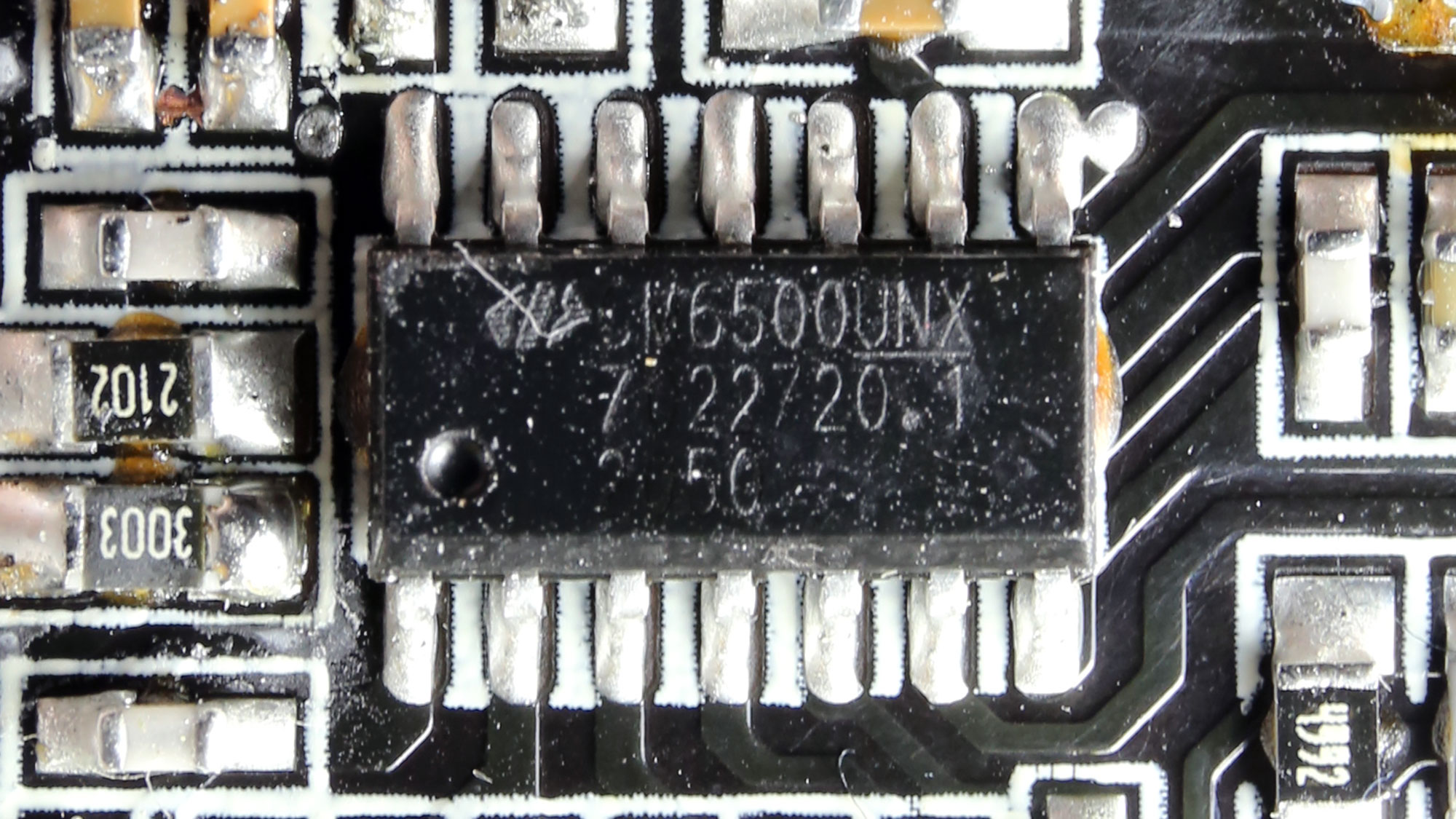
The APFC converter uses two Infineon FETs and an STMicroelectronics boost diode. The bulk caps are two Chemi-Cons, with 780uF combined capacity.

Main FETs and primary transformer



The four main FETs are arranged into a full-bridge topology. Moreover, an LLC resonant converter is used for increased efficiency. The resonant controller is the Champion CU6901V, which also includes a burst mode operation for high efficiency at super light loads. In this mode, the LLC converter turns off and then starts again to increase efficiency under super-light loads.

12V FETs and VRMs



Four Nexperia FETs regulate the 12V rail, while the minor rails are generated through six FETs from the same manufacturer. The common PWM controller for the DC-DC converters is an ANPEC APW7159C.

Filtering caps

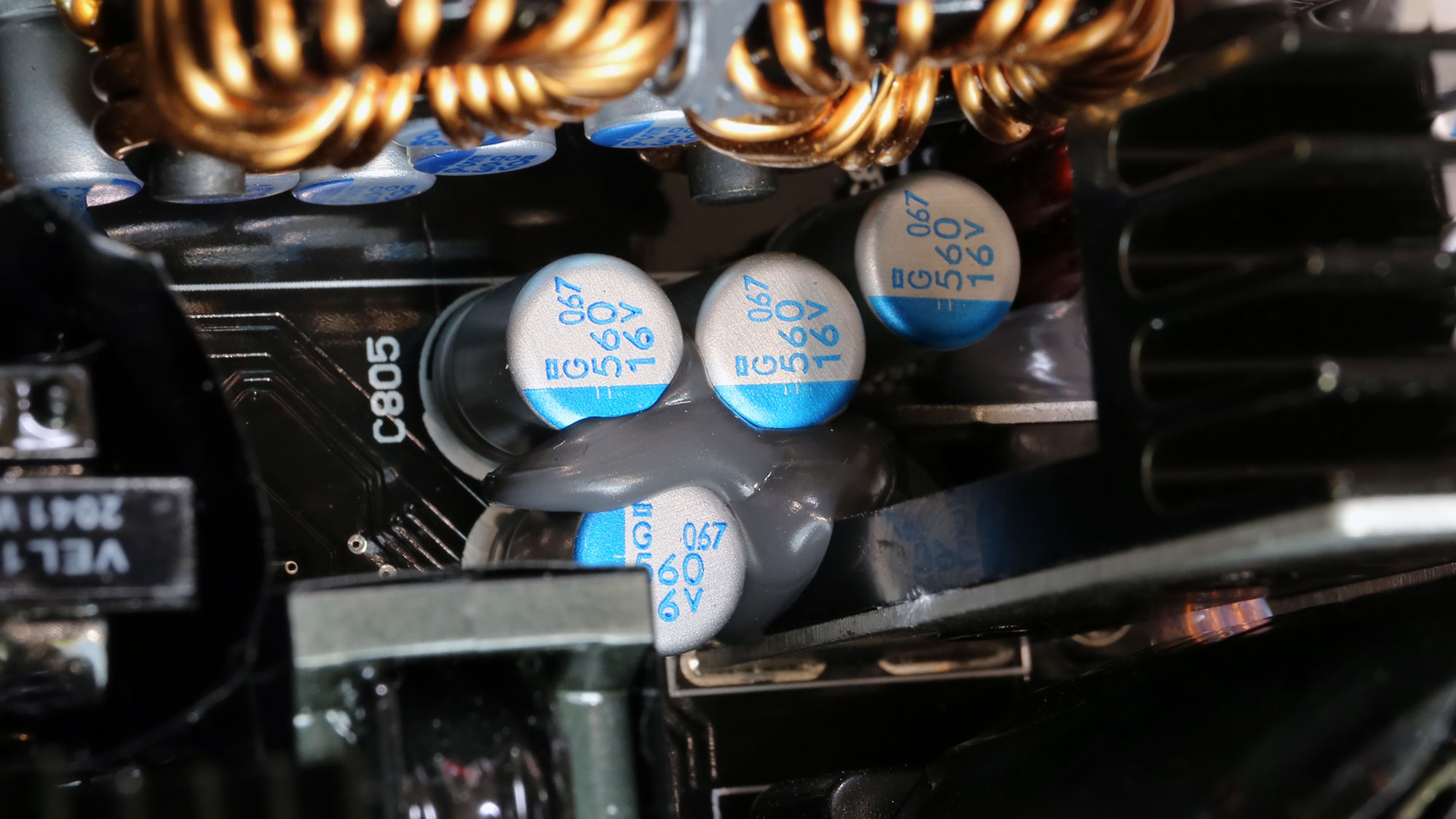
The electrolytic filtering caps from Chemi-Con and Rubycon are of high enough quality for the task at hand. There's also plenty of polymer caps in use here.

5VSB Circuit


The standby PWM controller for the 5VSB circuit is an Excelliance MOS EM8569C. Its efficiency levels are low. If Seasonic used a FET on the secondary side, energy losses would be lower.

Modular board front


Many polymer caps, from Chemi-Con and FPCAP, are installed at the face of the modular board.

The main supervisor IC is a Weltrend WT7527RA, supported by a WT51F104 micro-controller.

Soldering quality


Soldering quality is strong.
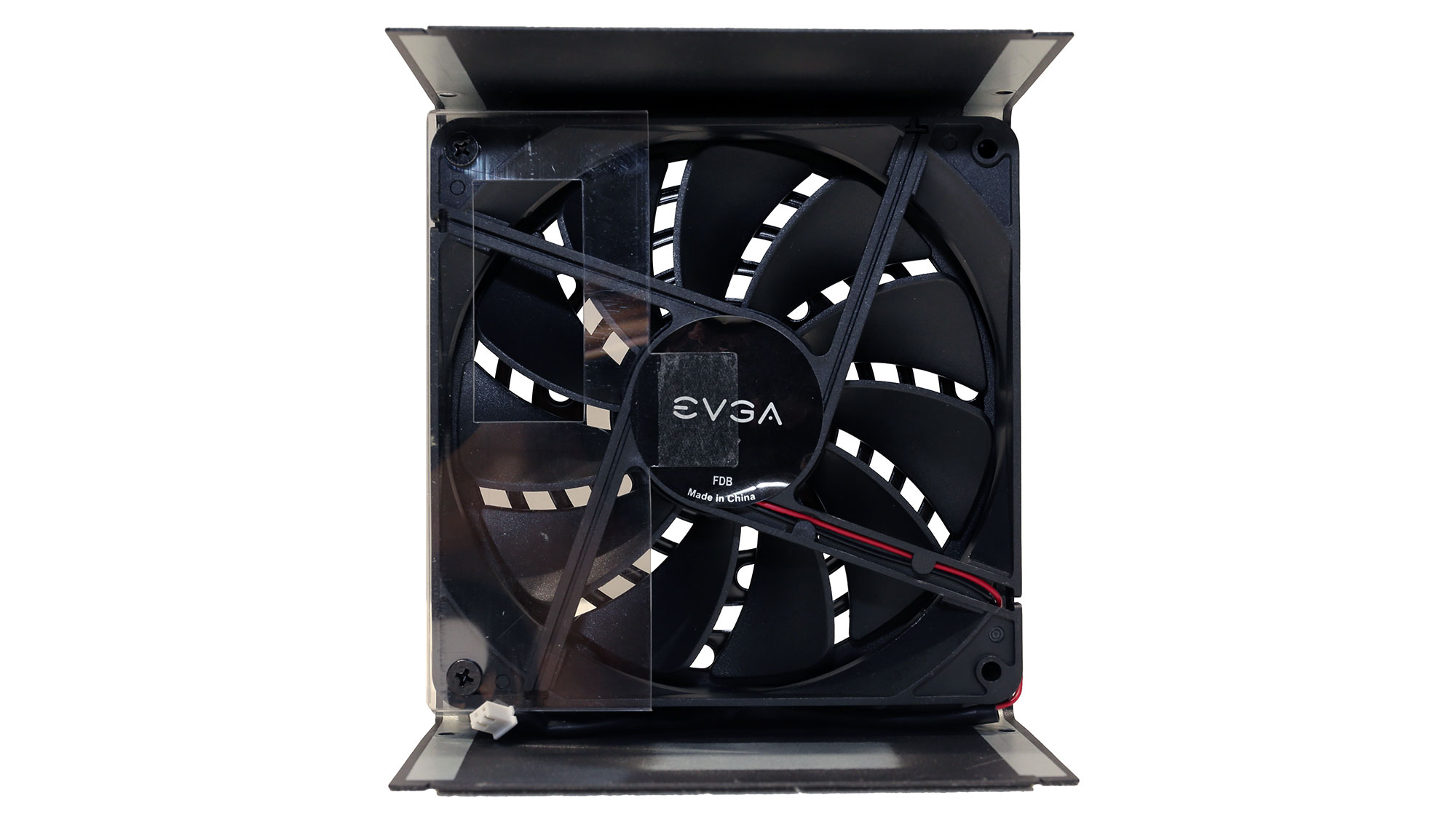
Cooling fan

Typically, Seasonic uses a Hong Hua fan in its units. The fluid dynamic bearing helps the fan keep its noise output low, and it is also far more reliable than plain sleeve bearings.
MORE: Best Power Supplies
MORE: How We Test Power Supplies
MORE: All Power Supply Content
Current page: Specifications and Part Analysis
Next Page Load Regulation, Hold-Up Time, Inrush & Leakage Current, Efficiency and Noise
Aris Mpitziopoulos is a contributing editor at Tom's Hardware, covering PSUs.
-
Johnpombrio I own 3 of the EVGA Supernova 850 G2 power supplies with LOTS AND LOTS of extra modular cables 😊. I didn't know that they were legendary, heh. The specs on the side of the PSU are the same as the G6 so I expect that the main difference is the efficiency. I turned on ECO mode and I doubt the fan ever spins.Reply -
taz-nz The biggest improvement is they got rid of the green chrome fan grill from the G5 series.Reply
If it's as reliable as the G2, G3 and G5 series, I look forward to building a lot of PCs with them.
It would be nice if they stepped up their game in cheaper non-modular models, they are significantly lower quality. -
SteelTeel Why is your noise measurement so different from what EVGA posts on its website? Are these measurements carried out with ECO mode enabled?Reply
-
wONKEyeYEs Just picked up a EVGA G1+ 850 W 80+ Gold.Reply
If anything goes wrong I know that I can count on EVGA's
excellent service.